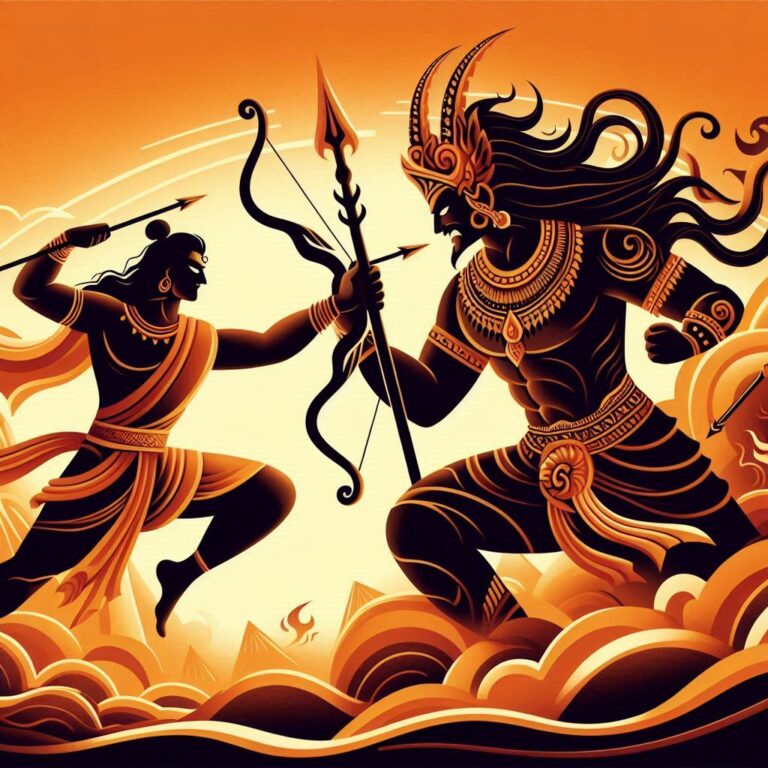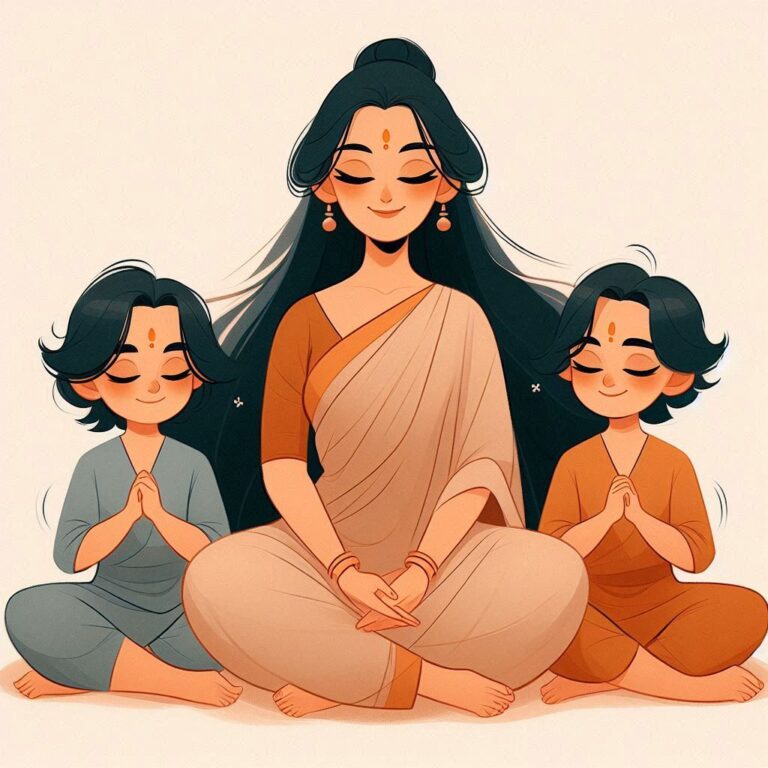Sita’s Courageous Choice: Leaving Ayodhya for Dharma’s Sake
Sita’s Courageous Choice: Leaving Ayodhya
When we think about epic tales from Indian mythology, few stories capture our imagination like that of Sita, the beloved wife of Lord Rama from the Ramayana. Sita is often celebrated for her unwavering devotion, strength, and, above all, her profound choices. One significant moment that reverberates through ages is her decision to leave Ayodhya. Let’s dive deep into this heart-wrenching yet pivotal moment in the narrative that laid the groundwork for discussions about duty, sacrifice, and the very essence of womanhood.
The Context of Sita’s Decision
Ayodhya, the capital of Rama’s kingdom, represented not just a physical space but the ideals of dharma (duty), righteousness, and love that Lord Rama embodied. After their return from exile and the defeat of the demon king Ravana, Sita was a symbol of purity and virtue. Yet, amidst all the celebration, Sita found herself caught in a moral dilemma that would eventually prompt her fateful choice.
The need for Sita’s decision to leave didn’t emerge out of thin air; it was precipitated by:
- Public Opinion: The echoing whispers and disapprovals from the citizens questioned Sita’s purity after her abduction.
- Rama’s Struggle: Lord Rama himself found himself torn between his duty as a king and his love as a husband.
- Trust and Love: It begged the question: How much trust can exist when doubts arise?
Sita’s Dharma and Sacrifice
Dharma, often translated as righteousness, isn’t just a noun but a way of life, a moral compass that guides individuals. Sita’s choice to leave was a testament to her understanding of dharma. It was not merely about personal sacrifice, but about fulfilling her divine duty.
एकं साक्षात् धर्मपत्नी, पतिव्रता च साध्वी सिता।
Ekam sākṣāt dharmapatnī, pativratā ca sādhvī sitā.
(Sita, the true embodiment of dharma, who was faithful and virtuous.)
Leaving the comforts of Ayodhya, the palace, and her husband was a courageous act. But the Question arises: was it truly an act of abandonment or a deep-rooted commitment to her role in the universe?
The Emotional Turmoil
Leaving Ayodhya wasn’t just about Sita stepping out of a place; it was about stepping away from everything she held dear. Imagine being at a point in life where every decision carries an emotional weight that feels suffocating. It’s like holding your breath underwater, knowing you must break the surface to survive.
Despite her painful choice, Sita remained resolute:
- For Sita, leaving was an act of setting a precedent : demonstrating to the world that sometimes, upholding dharma means making sacrifices.
- Her unwavering strength: Sita’s departure illustrates that true power isn’t just in the physical realm but also in the emotional and spiritual sacrifice.
Reflections on Sita’s Decision
It’s fascinating to reflect on Sita’s life lessons, especially in today’s world, where women often find themselves grappling with societal expectations versus personal desires. Her experience resonates with countless individuals today.
Why did Sita choose to leave?
- She prioritized collective happiness over fragmented familial dynamics.
- She was ready to stand alone even when surrounded by loved ones, emphasizing the importance of individual choice.
धर्मपत्नी धर्मात्मा, सर्वासां मातरः सदा।
Dharmapatnī dharmātmā, sarvāsāṁ mātaraḥ sadā.
(The righteous wife, wise and pious, always a mother to all.)
Sita’s Strength: A Feminine Perspective
Sita’s story can often be viewed through the lens of feminism even though it’s set in a different cultural context. Her courage resonates with women who seek identity and self-worth beyond societal definitions.
- Self-Identity: Sita was not just defined as Ram’s wife. She held her own strengths and virtues.
- Challenging Norms: By leaving, Sita also challenged the patriarchal norms of her time. She sought her truth rather than conforming to the expectations of society.
Lessons from Sita’s Life
- Embrace Your Choices: Every choice has its consequences, and that’s where our true character lies.
- Understanding Duty: Recognize that sometimes our duties to others might compel us to make uncomfortable choices.
- True Strength Lies Within: Strength is not about never breaking down; it’s about picking up the pieces, standing tall, and forging ahead.
Key Dohas and Shlokas
No discussion on Sita could be complete without reflecting on the poetic expressions that convey her essence. Here are a few dohas and shlokas that encapsulate Sita’s strength and resilience.
राघव कृपा सदा ममता, जिनके चित्त चुराए।
Rāghava kṛpā sadā matā, jinka citta curāye.
(Those who steal the hearts of others with Lord Raghava’s grace.)

धर्मज्ञा की गाथा है, सदा चलो अपनी राह।
Dharmajñā kī gāthā hai, sadā calo apanī rāh.
(It’s the tale of the righteous, always tread your own path.)
As we examine Sita’s courageous choice to leave Ayodhya, let’s consider it as a journey of self-discovery, moral questioning, and profound strength. Her choices teach us that true empowerment comes from understanding our duties and owning our decisions, regardless of societal pressures.
Conclusion
Sita’s decision to leave Ayodhya is a rich tapestry of emotion, duty, and strength. She is much more than a character in mythology; she is a reflection of the timeless struggle between personal desires and societal expectations. Her courage invites us to ponder on our decisions and the sacrifices they entail. As we carry forward Sita’s lessons in our lives, we realize that every choice shapes our identity and journey, and sometimes, stepping away is the first step toward empowerment.
FAQs
1. What prompted Sita to leave Ayodhya?
Sita left Ayodhya due to societal pressures questioning her purity after being abducted by Ravana, and to uphold her husband Rama’s reputation.
2. How does Sita’s action reflect feminist values?
Sita’s decision to prioritize her duty over societal expectations showcases her strength and independence, resonating with feminist ideals of self-identity and choice.
3. What lessons can we learn from Sita’s story?
We learn to embrace our choices, understand the complexities of duty, and recognize that strength often lies within the struggle to remain true to ourselves.
4. How is Sita viewed as a symbol of virtue?
In the Ramayana, Sita embodies the ideals of virtue, loyalty, and strength, standing as a pillar of moral values in Hindu traditions.
5. What role does Dharma play in Sita’s choice?
Dharma, representing righteousness and duty, is central to Sita’s decision, as she places the collective good and moral integrity above her personal happiness.







